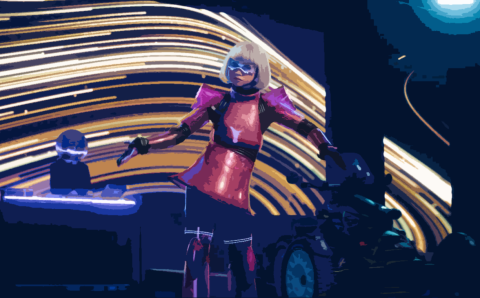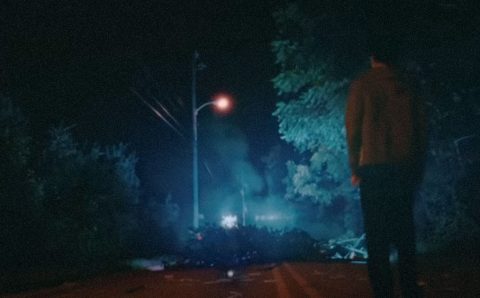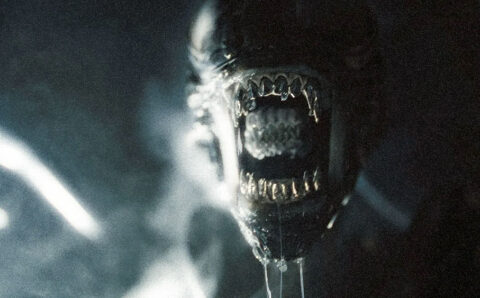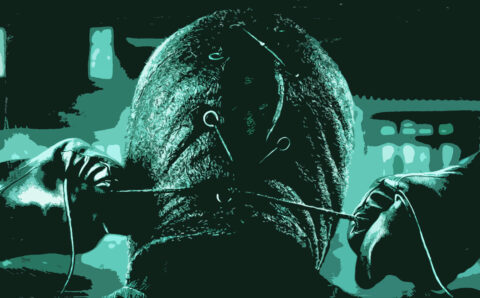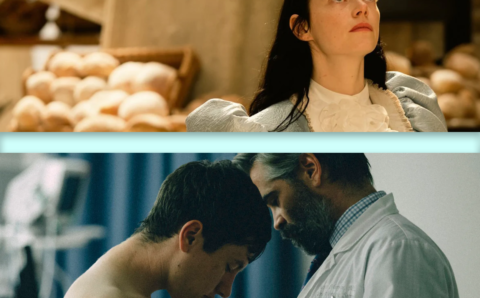Ryan Derenberger is a freelance journalist and editor, a Journalism and AP Language teacher at Whitman HS in Bethesda, MD, and the founder of 'The Idea Sift.' He also serves on the board of directors for student journalism nonprofit 'Kidizenship.'
July 16th, 2021 at 12:06 am EDT
Notice: This post contains spoilers for Joker (2019).
The Joker character has always been more “chameleon” than “comedian.” Its actors take on the counter-milieu and malaise of their era, often satirizing, and occasionally having a blast (in the case of Jared Leto, probably a bit too much so).
The “clown prince” is a manifestation of our collective Freudian id, expressing like bursts in a pipe, but perhaps less obviously and unlike the id, Joker’s plenty dynamic. He’s not always carnal, not always sadistic. Nicholson’s portrayal reminded us he could be narcissistic, Ledger’s nihilistic and “fair”, and Phoenix’s, just plain sick.
The public in 2019 received Todd Phillips’ Joker, starring the gaunt Joaquin Phoenix, with a mixture of awe and concern. American law enforcement had warned the film’s showings could be hotspots for mass shootings. In Aurora, Colorado, a petty, disgruntled, and aimless coward had taken the sequel to The Dark Knight (2008), The Dark Knight Rises (2012), as an opportunity to kill 12 moviegoers. Joker, we were warned, could suffer a similar fate.
Crowds packed the theaters all the same, propelling Joker to become the highest-grossing R-rated film of all time — but by the reports of critics and the broader public, the state of many minds leaving as the credits rolled was of genuine, domestic terror. People weren’t themselves triggered or themselves incited; they were terrified that the movie, deeply cautionary as its director insisted its design to be, would not be read by all so closely. They were terrified that Phoenix’s Joker was so magnetic that the other performances in the movie were like clovers to a redwood.
Seeing it in theaters myself, as Joker mounted a cop car in the penultimate sequence, I watched as a male in his 20s with a crisp crew cut abruptly stood from his seat in the middle of the theater and dug into his jacket, quick and sharp. A teacher, I started running through the scenarios we workshop every year. I began to look for blunt objects. I noted the exits. I didn’t fight the adrenaline. I knew, odds were the guy just thought the movie was wrapping up. He probably had been digging for his keys and was weighing whether or not he should admit defeat and sit down, again.
He ruled in favor of himself, the only person in a packed theater standing as the movie continued with another two scenes, the first at Arkham mental asylum, and then a slow-motion chase scene to boot. It was like watching a guy for a quarter mile play off tripping. It was also like watching a guy wait politely in line to commit a murder.
Ledger costumes were popular for several Halloweens after The Dark Knight, if not top sellers. (The mass murderer from the theater murders in Colorado had dyed his hair, too, mimicking the villain.) Ledger impressions and his quotable moments achieved meme status in the late 00s, rivaled perhaps only by The Chappelle Show‘s. Social critics expected a similar cache in the culture waiting to be employed on this newer Joker’s behalf. Costumes did come once again — Joker was released in the first week of October, after all — but as the satirical The Wolf of Wall Street (2013) outlasted the immediate minefields of Wall Street bros idolizing and mimicking DiCaprio’s and McConaughey’s beating their chests, Joker too has come to outlive its once immediate exigence. In a second life on HBO Max, freshly post-pandemic, or at least within the last leg of the pandemic, the movie is potent with Phillips’ and Phoenix’s reported, original intention: the Joker is a textured failure, an inversion of comic-book binaries.
Philips told Vanity Fair in 2019 that the idea was to “take the comic book movie universe and turn it on its head.” Before Pheonix agreed to the sensitive movie, he vetted Philips and the screenplay for four months. Phoenix’s hand in the vector of the narrative was so strong that he walked out on an interview when asked if the film’s message might backfire — he took offense at the suggestion of such a catastrophic failure, as if Bob Marley had been asked if “One Love” might actually start World War III.
Phoenix’s Joker enraptures the most reactive in his city in black-or-white thinking, a mobilization of the 99% nation, which, as is the case in most nationalistic upheavals, comes to fling itself violently at far more of its own 99% than it does the one. The cornered simplicity of the character’s thinking — thematic one-upmanship ostensibly directed right back at Ledger’s “Intro to Philosophy” Joker — creates casualty after casualty.
In the comfort of your living room, you mourn the hundreds, or thousands, that the Joker’s exponentially childish thinking will number among its dead during the city riots, from EMTs to cab drivers.
The two cops Joker leads into life-threatening beatings are the kind of cops we want. They do their jobs. They’re good at those jobs. They work deliberately. They’re after genuine criminals, murderers. They don’t get any sort of sadistic glee out of what they do. Boring and common, they look like they have rent and bills due. Joker’s mutating thoughts savage them.
He kills his mother once he realizes she has a long-untreated mental illness, without any care of the irony.
DeNiro’s talk show host is a real jerk, but his murder is gruesome, disturbing, and disproportionate to his crimes. There’s nothing about the shot to the head that’s cartoonish, like Nicholson’s violence in Batman (1989) or Jared Leto’s in Suicide Squad (2016). On-screen are just two men who, arrogantly, each claim to have an exclusive “in” on a cosmology worthy of adoption. Theirs are diametrically opposed life strategies, and for Philips, neither Murray’s nor Joker’s entice. This is parody.
Then there’s Phoenix, who tortures himself to fold into his body on-screen the character’s triggers and pulls. He crescendos in utter realism as a result. What twisted joys existed in the previous iterations of the Joker do not exist with Phoenix. His was a sadness and a harboring, not an expunging, of both extreme original sin and Eden-innocence.
The endearing qualities the character does have — the dedication to his mother he reveals in the talk show fantasy, his goofy relatability when he role-plays meeting someone who compliments his dancing — he eradicates in transformation.
Ledger’s popularity, a wide, wildfire effect as a model of what to do, I’ve argued, would have mortified him. To the despondent and lost in ’08, there was a guy who was living better than they. Phoenix? His tears, his total self-destruction? He’s too empathic and sad for masculinity-cultured men. The personality market for him is untrafficked, and the damage he causes is unkarmic. He’s pathetic.
In the comfort of your home that you or yours earned and furnished, a bathroom ten steps away, a pantry not empty, it’s easy to convict this Joker’s worldview when your brain feels safe enough to litigate and prosecute. No one is bursting out of their seats; no warning has been issued for your living room. In the peace, you start to notice what the filmmakers always said they left for us. Without the fanfare of the theater, without goading friends to impress with an impression, without a fresh meme culture, Joker is now harrowing and damning by its own metrics.
Unlike its antihero, the film is confident and aware. Its message centers in every frame: we are screwing this up. We are each complicit in sick cultures that suddenly look like everything not to do. Whether our fault or not, whether Joker’s station is his or not, our failure is all the same.
Ledger’s Joker as a model of a free mind.
THE SIFT
Phoenix’s Joker as a model of mental illness, illuminating sets of thoughts that only mask themselves as profound.
Ryan Derenberger is a freelance journalist and editor, a Journalism and AP Language teacher at Whitman HS in Bethesda, MD, and the founder of 'The Idea Sift.' He also serves on the board of directors for student journalism nonprofit 'Kidizenship.'








